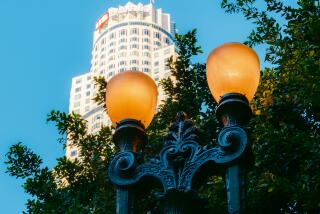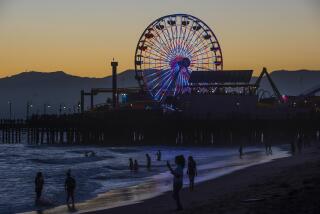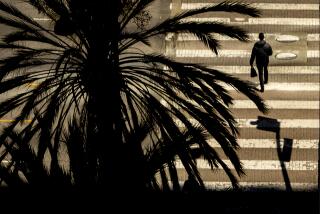Astronomers Still Need City’s Help : Light: The county’s two important observatories will suffer if San Diego goes back on its word to use on low-pressure sodium street lights.
Six years ago, the San Diego City Council passed an important ordinance mandating the use of low-pressure sodium street lights throughout the city. This was done to preserve the dark skies of the San Diego area for astronomical observation and, at the same time, save the taxpayers more than $2 million a year through the use of energy-efficient lighting.
Now the City Council is considering changing this ordinance or doing away with it altogether. I believe the City Council made the right decision six years ago, and now, with the conversion to low-pressure sodium lights virtually complete, the council should stick by it.
The immediate issue is a proposal to increase the outdoor lighting in high crime areas.
We astronomers do not object to this as long as the additional lights are low-pressure sodium. San Diego’s police chief has stated that there is no evidence favoring one street light over another in the prevention of crime. Since we do know that lights other than low-pressure sodium hurt astronomy and are wasteful of energy, the low-pressure lights are the reasonable choice. These lights offer sufficient visual clarity to be used on the decks of aircraft carriers for night landings.
San Diego County is unique. Its mountain region, with its skies and clean air, has been judged to be possibly the best astronomical location in the continental United States. This area is home to the world-famous Palomar Observatory and San Diego State University’s multimillion-dollar Mount Laguna Observatory.
The discoveries made by telescopes, looking at objects so far away that we literally count the particles of light one at a time, have given us an awe-inspiring picture of the universe in which we live. We continually read about telescopic discoveries of fascinating new objects: quasars, neutron stars, black holes. Thus astronomy contributes enormously to our knowledge of the physical universe. This knowledge is far more important than consideration clothes colors, brightly lighted advertising signs, or flashily illuminated buildings.
This ordinance, according to the March 8 city manager’s report, was not passed just to benefit astronomers. It saves money. The estimated cost of replacing the low-pressure sodium lights in San Diego would be $6 million to $7 million. In addition, because the proposed high-pressure sodium lights are less efficient than the current low-pressure lights, annual electrical costs would increase by approximately $500,000. This is at a time when the San Diego City Council is considering major reductions of needed community services because of a budget crunch.
In the this month’s issue of Smithsonian magazine, the city and county of San Diego are commended for their forward-looking, dark-sky ordinances. The article also points out that if the rest of the United States used proper outdoor lighting--downward-shielded, low-pressure sodium lights--the country would be able to save the equivalent of 23 million barrels of oil every year. In addition to reducing pollution, this represents an energy cost savings that approaches $1 billion a year.
We know that high-pressure sodium street lights use more energy, would require costly re-conversion, and do great harm to our country’s tradition of world-class observational astronomy. There is no evidence that this type of street lighting has any affect on crime.
The City Council took a bold step forward six years ago, let us not step backwards now.
More to Read
Sign up for Essential California
The most important California stories and recommendations in your inbox every morning.
You may occasionally receive promotional content from the Los Angeles Times.










